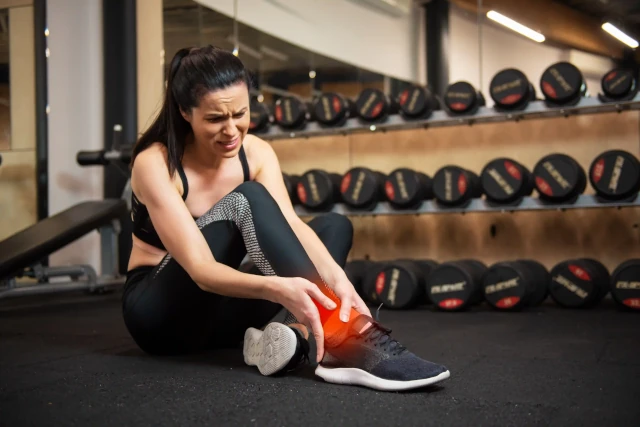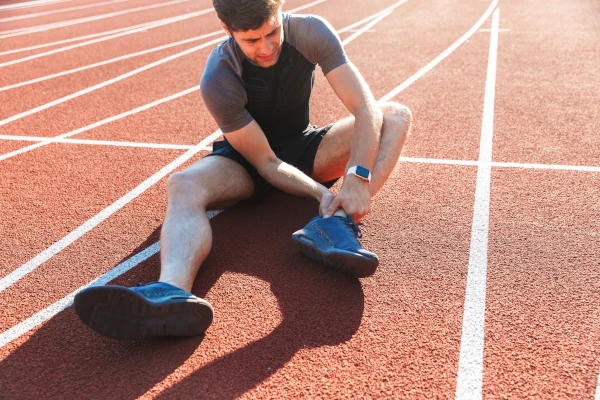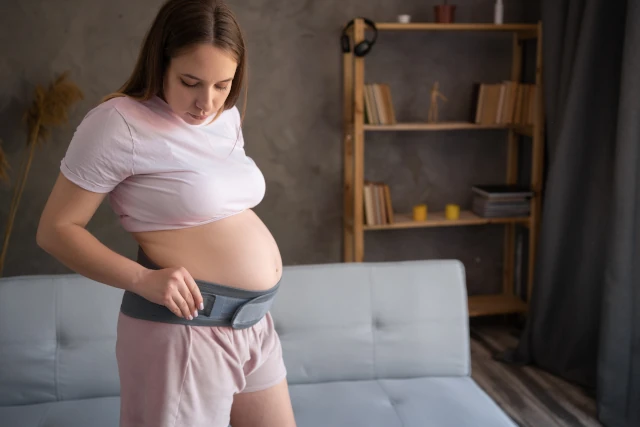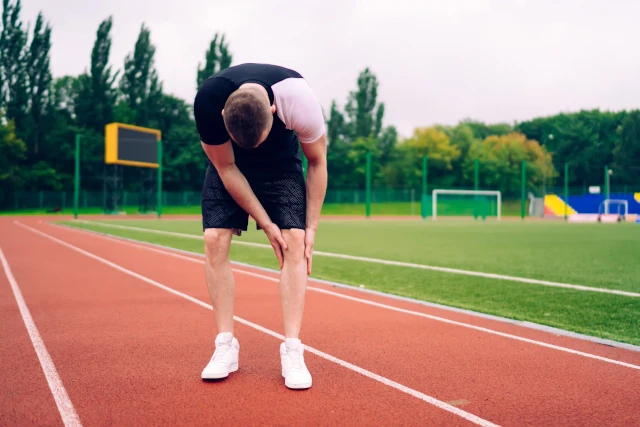
Muscle Cramps After Heavy Exercise: Causes, Prevention, and Treatment
- Dr. Ankita Aggrawal (MPT)
Connect with our expert physiotherapist for personalized physiotherapy advice.
Muscle cramps are a common issue for anyone engaging in intense physical activities, from athletes to fitness enthusiasts. These sudden, involuntary muscle contractions can be painful and disruptive, often occurring during or after a workout. If you have experienced muscle cramps after heavy exercise, you know how frustrating it can be. In this blog, we’ll dive into what causes muscle cramps, how to prevent them, and ways to alleviate the discomfort if they do occur.
What Are Muscle Cramps?
Muscle cramps are sudden, involuntary contractions of one or more muscles, typically occurring in the legs, calves, or feet. These spasms can last from a few seconds to several minutes, causing intense discomfort and sometimes lingering soreness. While anyone can experience muscle cramps, they are especially common after heavy or prolonged exercise.
Common Causes of Muscle Cramps After Exercise
- Dehydration:
One of the leading causes of muscle cramps during or after exercise is dehydration. When your body loses fluids and electrolytes through sweat, the balance of sodium, potassium, calcium, and magnesium in your muscles can become disrupted, leading to cramps.
- Electrolyte Imbalance:
Electrolytes are minerals that help regulate muscle function. An imbalance, especially in potassium and magnesium levels, can trigger cramps. This imbalance is often due to inadequate hydration or not replenishing electrolytes lost through sweat.
- Overexertion:
Pushing your muscles beyond their capacity during heavy exercise can lead to cramping. Overworking muscles causes them to fatigue and contract uncontrollably. This is common in high-intensity workouts, especially if your muscles aren’t conditioned for the activity.
- Poor Circulation:
Blood flow delivers oxygen and nutrients to your muscles, helping them function properly. Poor circulation can hinder muscle performance, leading to cramps, especially in people with underlying health conditions or those who sit or stand for long periods before exercising.
- Muscle Fatigue:
When muscles become fatigued, they are more prone to cramping. Overworking muscles, especially without proper warm-up or cool-down exercises, can increase the likelihood of cramping.
- Inadequate Stretching:
Skipping warm-up stretches before heavy exercise or failing to cool down afterward can lead to tighter muscles, making them more prone to cramping.
How to Prevent Muscle Cramps After Heavy Exercise
- Stay Hydrated:
Drinking enough water before, during, and after your workout is essential. Replenish lost fluids, especially if you are sweating heavily. Electrolyte-rich drinks can also help maintain balance.
- Balance Electrolytes:
Make sure you are getting enough electrolytes, especially if you are doing endurance sports or heavy sweating. Foods like bananas (rich in potassium), leafy greens, and seeds (magnesium sources) can support muscle function.
- Warm-Up and Cool Down:
Always incorporate a proper warm-up routine to prepare your muscles for exercise. Post-workout cool-downs and stretching exercises can help relax and restore muscles, reducing the likelihood of cramps.
- Condition Your Muscles:
Gradually increase the intensity and duration of your workouts to prevent muscle fatigue. Conditioning your muscles will make them more resilient to cramping.
- Massage and Stretch Regularly:
Regular stretching and massage can help keep muscles flexible, reducing cramping risk. Stretch key muscle groups, such as calves, hamstrings, and quadriceps, especially after a workout.
What to Do When You Experience a Muscle Cramp
- Stop and Stretch:
As soon as you feel a cramp coming on, stop your activity and gently stretch the affected muscle. Hold the stretch until the cramp subsides. For example, if your calf cramps, try a standing calf stretch by leaning against a wall.
- Massage the Muscle:
Lightly massaging the cramped muscle can help relax the contraction. Use your hands or a foam roller to gently press and relieve tension in the affected area.
- Hydrate and Replenish Electrolytes:
Drinking water or an electrolyte drink can help restore balance and ease the cramp.
- Apply Heat or Ice:
After a cramp, give your muscles some time to recover before resuming exercise. Avoid overexerting them immediately, as this can lead to recurrent cramping.
- Rest:
A structured physiotherapy program focuses on strengthening the muscles around the heel and improving overall foot biomechanics to reduce strain on the heel bone.
Conclusion
Muscle cramps after heavy exercise can be frustrating, but they are preventable with the right strategies. Staying hydrated, balancing electrolytes, and properly conditioning your muscles are key to avoiding these painful episodes. If you do experience a cramp, gentle stretching, hydration, and rest will help you recover quickly. By following these tips, you can continue enjoying your workouts without the discomfort of muscle cramps holding you back.
FAQs
- Q: Why do I get muscle cramps after intense workouts?
A: Muscle cramps are often caused by dehydration, electrolyte imbalances, or overworked muscles during intense exercise.
- Q: Can stretching prevent muscle cramps?
A: Yes, proper warm-up stretches before exercise and cool-down stretches afterward can help prevent muscle cramps by maintaining muscle flexibility.
- Q: How can I stop a muscle cramp quickly?
A: Stop exercising, stretch the cramped muscle, and gently massage the area. Drinking water or an electrolyte drink can also help ease the cramp.
Connect with our expert physiotherapist for personalized physiotherapy advice.



